#Kim Hyeon Jeong
Explore tagged Tumblr posts
Text









KIM Hyeon Jeong [SeolA] ☾ WJSN, WJSN THE BLACK
9 avatars / 400*640 ↬ yellow coloring
G A L E R I E (+10)
#kim hyeon jeong#kim hyeonjeong#seola#wjsn#wjsn the black#cosmic girls#korean#avatar#avatars#avatar rpg#rpg#avatars rpg#avatar 400*640#avatars 400*640#400*640#avatar seola#avatars seola#avatar wjsn#avatars wjsn#by saya#bysaya#by sooyoo#bysooyoo#yellow coloring
5 notes
·
View notes
Text
Hierarchy

TV Shows/Dramas watched in 2024
Hierarchy (2024, South Korea)
Director: Bae Hyeon Jin
Writer: Chu Hye Mi
Mini-review:
Oof, what a disappointment. I feel like this wanted to be one of those transgressive teen shows we get in the West, but then it didn't have the guts to go all the way and ended up being like any other kdrama about the rich and the poor. And even then, it's just not good at that either. The writing leaves a lot to be desired, and it gets more boring with every episode. The acting is also all over the place; some of the actors do a solid job, but most of them are mediocre or downright terrible. Tbh, there are two things that save this drama from disaster: firstly, the director adds a lot of style and flair to the proceedings; secondly, sometimes it's fun to see a bunch of super pretty people all together in one place. But still, there are a lot of shows where you can find those things with much better quality. I wouldn't recommend Hierarchy, unless you really love someone in the cast...
#hierarchy#hierarchy 2024#hierarchy netflix#bae hyeon jin#chu hye mi#roh jeong eui#lee chaemin#lee chae min#kim jae won#ji hye won#lee won jung#byeon seo yoon#choi won young#bae hae seon#kim min chul#seo bum june#kim tae jeong#lee min goo#kwon eun bin#pyo young seo#yoon se ah#kim jun hyung#seo jun#teen drama#dark teen drama#romance#bullying#kdrama#south korea#2024 tv shows and dramas
28 notes
·
View notes
Text


SangAh, Hina, YuJeong, JuHyeon, NaYoung & Chowon (LIGHTSUM) - Selcas
#SangAh#Yoon Sang Ah#Hina#Nagai Hina#YuJeong#Lee Yu Jeong#JuHyeon#Lee Ju Hyeon#NaYoung#Kim Na Young#Chowon#Han Cho Won#LIGHTSUM#Selca
11 notes
·
View notes
Photo

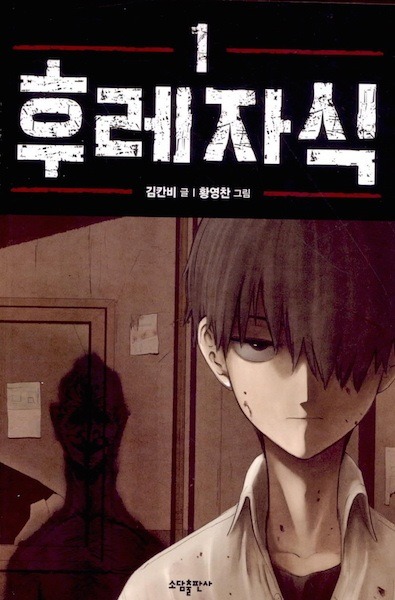

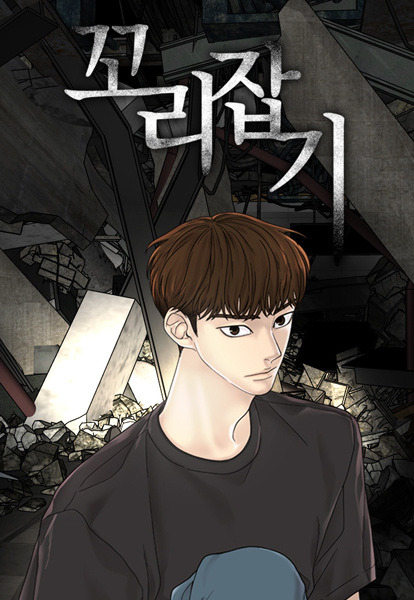


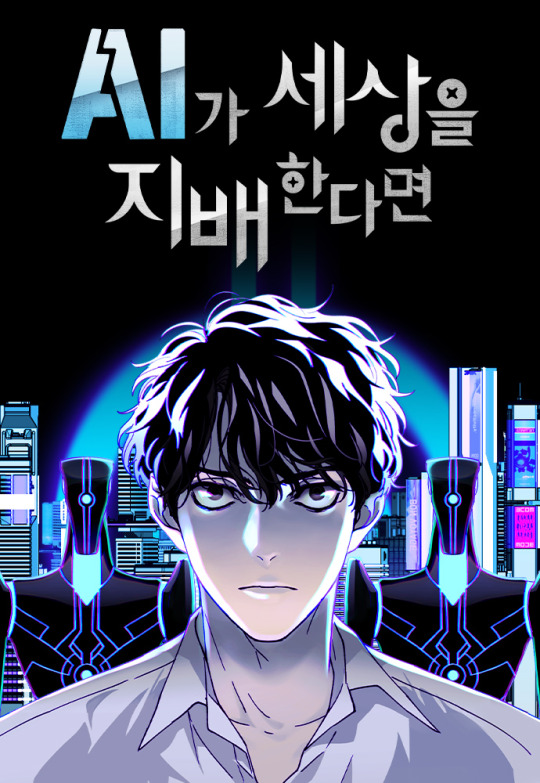
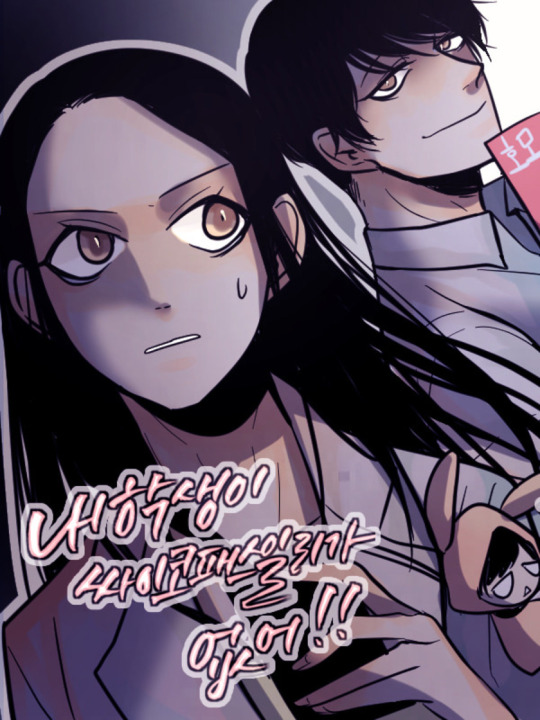

My fav psychological manhwa:
Distant Sky (Yoon In Wan, Kim Sun Hee)
Bastard (Carnby Kim, Hwang Young Chan)
Trapped (Haemuri)
Chasing Tails (Bashi)
The Horizon (Jeong Ji Hoon)
Flawed Almighty (Carnby Kim, RH Song)
If AI Ruled the World (Pogo, Hoopa)
My Student Can't Be a Psychopath (Pluto)
Surviving Romance (Yone Lee)
#distant sky#yoon in wan#youn in wan#yun inwan#kim sun hee#bastard#carnby kim#kim min tae#hwang young chan#trapped#olgami#haemuri#chasing tails#bashi#the horizon#jeong ji hoon#flawed almighty#rh song#song rae hyeon#if ai ruled the world#if ai rules the world#pogo#hoopa#my student can't be a psychopath#pluto#surviving romance#lee yeon#yone lee#manhwa#webtoon
133 notes
·
View notes
Text
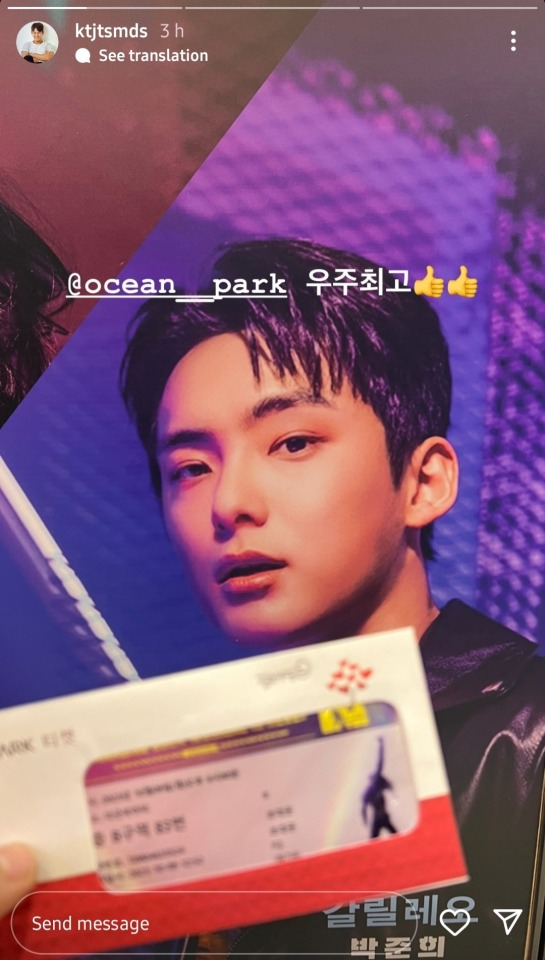
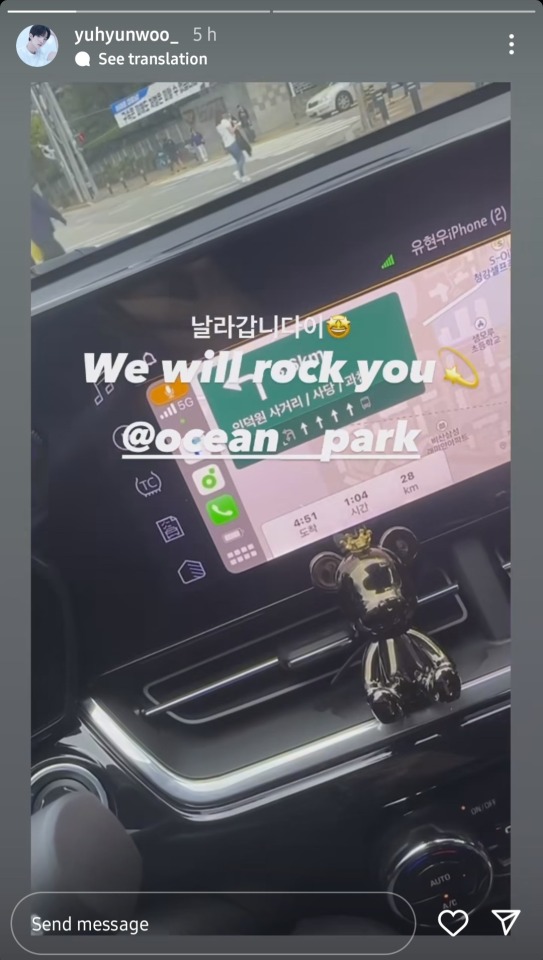
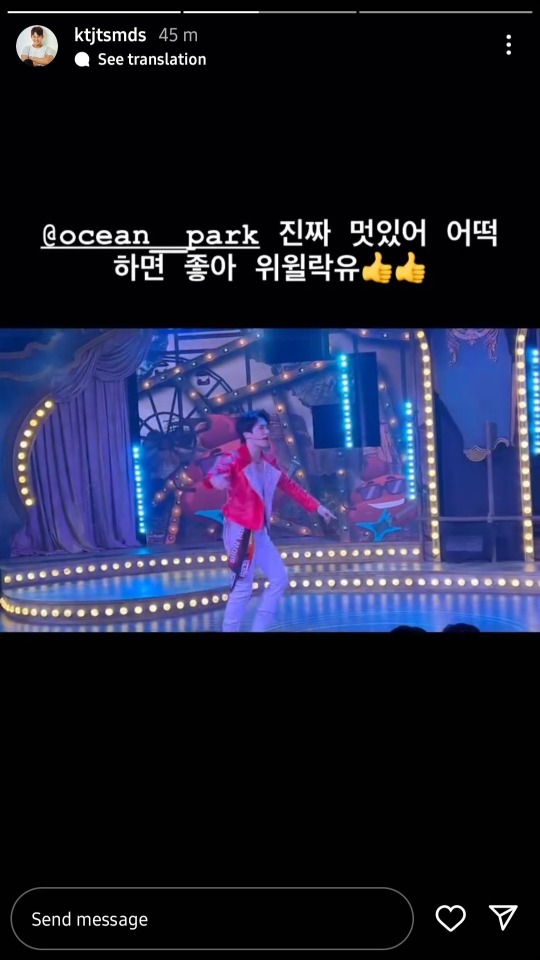

Taejung showing his musical ticket "@jun the best in the universe 👍👍"
Hyunwoo showing he's on his way "flying to the theater 🤩 we will rock you 💫 @jun"
Taejung filming the ending "@jun really so cool, oh my god, wewillrokyou 👍👍"
Taejung reposting a fan's pic that shows Hyunwoo and Taejung 'paparazzi-ing' Jun ^^
#tinted with you#reunion#a.c.e#junhee#물들여#kim tae jung#yoo hyun woo#kim tae jeong#yoo hyeon woo#a.c.e jun#we will rock you
19 notes
·
View notes
Text






#quotes#quotable quotes#movie#movie quotes#poetry#poem#poet#life#korean#Korean drama#Kdrama#My Liberation Notes#나의 해방일지#Yeom Mi Jeong#Kim Ji Won#Ji Hyeon A#Jeon Hye Jin#suicide#suicidal#building#mental health#mental care
4 notes
·
View notes
Text

A LOVE SO BEAUTIFUL // KDRAMA DİZİ YORUMU
UYARI : Yazılar genel olarak spoiler içerebilir. İçermeyedebilir.
İmdb puanı: 7,3 Benim puanım: 7
Drama: A Love So Beautiful
Hangul: 아름다웠던 우리에게
Director: Seo Min-Jung
Writer: Jung Yoo-Yeon, Choi Yoo-Jung
Date: 2021
Language: Korean
Country: South Korea
Cast: Kim Yo-Han, So Ju-Yeon, Yeo Hoi-Hyeon, Cho Hye-Joo, Jeong Jin-Hwan
Bazen bazı diziler, izlerken insanda büyük bir etki bırakmaz. A Love So Beautiful benim için tam da böyle bir yapımdı. Kore uyarlaması olan bu dizi, adeta hayatın sıradan bir kesitini izliyormuş hissi veriyor; ama bu kesitin içine tam anlamıyla çekildiğimi söyleyemem. Hikayesi net bir şekilde belirlenmiş değil; daha çok lise yıllarının, ilk aşkın ve gençlik dostluklarının naif bir yansıması gibi. Ancak, bu naifliğin çoğu zaman yüzeysel kaldığını düşünüyorum.
Karakterlere gelirsek, oyunculukların tutuk olduğu ve karakterlerin amatörce yazıldığı hissi oldukça baskındı. Özellikle Cha Heon(Kim Yo-Han) karakterinin duygusal anlamda mesafeli ve soğuk yapısı, izleyicinin ona bağlanmasını zorlaştırıyor. Sol-i’(So Ju-Yeon) nin tüm sevimliliğine rağmen sürekli olarak onun peşinde koşması ve kendini geri plana atması ise izlerken rahatsızlık yarattı. Bu durum, hikayenin ana aşk dinamiğini zayıflatıyor ve seyirciye, "Neden böyle bir ilişkiyi destekliyoruz?" sorusunu sorduruyor.
Dizinin artı yönleri yok muydu? Elbette vardı. Hayatın büyük çatışmalarından uzak, sakin bir izleme deneyimi sunması, yoğun dramatik dizilerden yorulanlar için hoş bir mola olabilir. Ayrıca Sol-i karakterinin çocuksu masumiyeti ve bazen tatlı bulunan olay örgüsü, bazı izleyiciler için keyif verici olmuş. Ancak bu tatlılık, daha derin bir hikaye ya da güçlü bir karakter gelişimi bekleyenler için pek tatmin edici değil.
İzleyenler arasında diziyi sevenler ve eleştirenler arasında net bir ayrım var. Sevenler, lise yıllarına dair nostaljik hislerin ve saf aşkın güzelliğini vurguluyor. Ancak, eleştirenler ise bu hikayenin basitliği ve oyunculukların doğallıktan uzak oluşu konusunda birleşiyor. Çin versiyonunu izleyenler ise Kore uyarlamasını genellikle daha sönük buluyor; çünkü orijinalin duygusal etkisinin bu yapımda yeterince hissettirilmediği görüşündeler.
Kendi adıma, bu diziyi 1. sınıf Kore yapımları arasına koymam mümkün değil. Ancak, eğer kafanızı çok yormadan, hafif bir gençlik romantizmi izlemek isterseniz, belki bir şans verebilirsiniz. Yine de, beklentilerinizi fazla yüksek tutmamanızda fayda var. A Love So Beautiful, güçlü bir hikaye arayanlara değil; biraz eğlenceli, biraz nostaljik ve kesinlikle hafif bir seyirlik isteyenlere hitap eden bir yapım.
Son olarak, diziyi izlemeyi düşünenlere önerim: eğer lise dönemlerindeki ilk aşk ve arkadaşlık hikayelerine dair tatlı anılarınızı hatırlamak istiyorsanız, bu dizi size hoş birkaç saat sunabilir. Ancak, daha yoğun bir anlatım arıyorsanız, muhtemelen başka seçeneklere yönelmek daha doğru olur.
OST:
SinB - Loveable
Raven Melus
BAŞKA NELER VAR ?
FOTOĞRAFLAR
#A Love So Beautiful#kdrama#yorum#inceleme#eleştiri#dizi#kore#Kim Yo-Han#So Ju-Yeon#Yeo Hoi-Hyeon#Cho Hye-Joo#Jeong Jin-Hwan
0 notes
Text

Suddenly in the Dark (Gipeun bam gabjagi), Young Nam Ko (1981)
#Young Nam Ko#Sam yuk Yoon#Il bong Yun#Kim Yeong ae#Lee Ki seon#Hye ri Han#Pil shi Jeong#Jong hyeok Choi#Dong Chun Hyeon#1981
0 notes
Text
youtube
Missing Blue Dot (2022) [11 min] by Kim Hyeon-ji, Kim Hee-seo, Kim Hee-sun and Jeong Seo-yoon | Korea
#2D#2D Animation#2022#11 min#Kim Hyeon-ji#Kim Hee-seo#Kim Hee-sun#Jeong Seo-yoon#Korea#Animated Short#AnimatedShortOfTheDay#Animation#Alien#Ice Age#Spaceship#Korea Animation High School#Anigo#Memories#Youtube
0 notes
Text
Meongmongi (2023)
멍뭉이 / My Puppy Jahr: 2023 (August) Genre: Comedy / Drama / Familienfilm Regie: Joo-hwan Kim Hauptrollen: Tae-Hyun Cha, Jeong Ji-Hoon, Hyeon-ji Park, Soo-young Ryu, Lee Seung-hee, Yoo Yeon-Seok … Filmbeschreibung: “Meongmongi” (Mein liebes Haustier) erzählt die Geschichte eines Mannes, der sich auf seine Hochzeit vorbereitet und ein Abenteuer erlebt, als er mit seinem Freund loszieht, um…

View On WordPress
0 notes
Text
Family by Choice Whump List
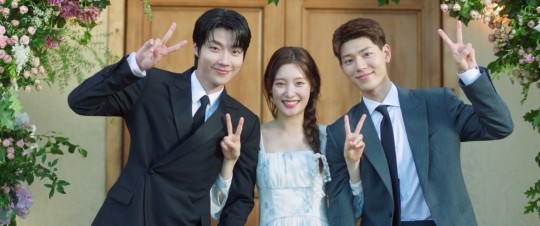
Summary: Despite not being biologically related, Kim San Ha, Yun Ju Won, and Kang Hae Jun share a close bond with each other. The trio spent their adolescence raised by Ju Won's father, Jeong Jae, and San Ha's father, Dae Uk, who did their best to give them a happy childhood as they healed from past trauma. Upon reaching adulthood, however, San Ha and Hae Jun sought out their biological families, leaving Ju Won behind. Ten years later, the five members of their found family reunite, but things aren't the same as they used to be. Ju Won holds some resentment after feeling abandoned by San Ha and Hae Jun, while the two boys are struggling with their own familial issues and one is struggling with new romantic feelings for Ju Won. Can these chosen siblings work out their feelings with each other, and will romance form between them?
Genre: Comedy, romance, youth, family
Year: 2024
Country: South Korea
Where to watch: Viki
Note: This is a remake of the Cdrama Go Ahead. You can check out that whump list here.
Possible spoilers ahead...
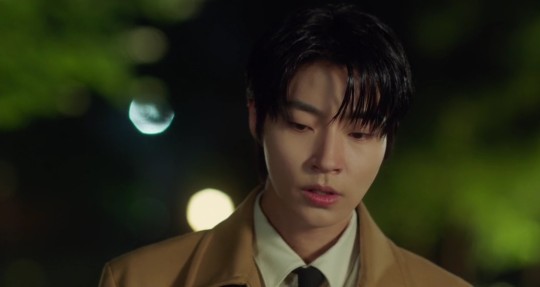
Whumpee: Kim San Ha played by Hwang In Youp
Episode 1: None
Episode 2: Called unfortunate; upset about his mother
Episode 3: Flashback to when his little sister died; flashback to his childhood trauma
Episode 4: Unable to sleep; sees his mother for the first time in ten years, his mother tells him she still believes he is responsible for his sister’s death; flashback to his sister’s death, in a daze, nearly walks into traffic; punched in the face, falls to the ground, blood on his lip, single tear falls
Episode 5: (Picks up from previous episode) on the ground, blood on his lip; in a fight (semi-comical), arrested, father disappointed in him
Episode 6: Mother tells him his sister died because of him; sitting with his knees to his chest, remembering all the times his mother blamed him; stops eating, family concerned about him, crying; has a fever, towel on his head, family caring for him
Episode 7: Learns his mother was in a car accident, teary-eyed
Episode 8: His mother says hateful things to him
Episode 9: Crying
Episode 10: Scar on his hand, flashback to his mother refusing to let him leave
Episode 11: None
Episode 12: Sick, cared for
Episode 13: Mother tries to guilt trip him into staying with her, single tear falls, mother slaps him, upset, sinks down to his knees; confronted about his insomnia, crying
Episode 14: None
Episode 15: Father figure doesn’t approve of his relationship, sad; hit on the head (by accident), falls into a table, lands on the floor, in the hospital, wound on his side, bandage on his head; confronts his mother, flashback to hot food falling on his back
Episode 16: None
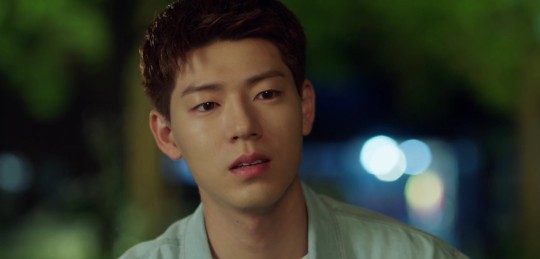
Whumpee: Kang Hae Jun played by Bae Hyeon Seong
Episode 1: None
Episode 2: Called unfortunate; finds out someone has been taking pictures of him; told not to be a burden; thinks he sees his mother (who abandoned him), sad
Episode 3: Learns his bio dad lied to him, sad; crying
Episode 4: Memories of his mother; upset
Episode 5: In a fight (semi-comical), arrested; made to feel like a burden; crying; told to forget about his mother
Episode 6: Learns his mother came back but doesn’t want to see him, crying
Episode 7: Crying under his covers; crying while talking about his mother
Episode 8: Concern for his dad; chooses to go to America with his bio dad so his dad stops overworking himself, crying
Episode 9: Crying
Episode 10: It’s revealed that he hurt his leg while in America, upset, concern for him, scar on his ankle
Episode 11: Thinks he sees his mother, teary-eyed
Episode 12: Scolded, crying, dad tells him to leave; finds his mother, emotional; says he’s too scared to hear why his mother didn’t come back
Episode 13: None
Episode 14: Feels left out, crying, asks why he’s always getting abandoned; confronts his mother, crying, family concerned for him; discovers the real reason his mother abandoned him, emotional, has a breakdown
Episodes 15-16: None
79 notes
·
View notes
Text
"Had she initiated a peck, he would have turned it into an intense lip lock" pairings in KDramas
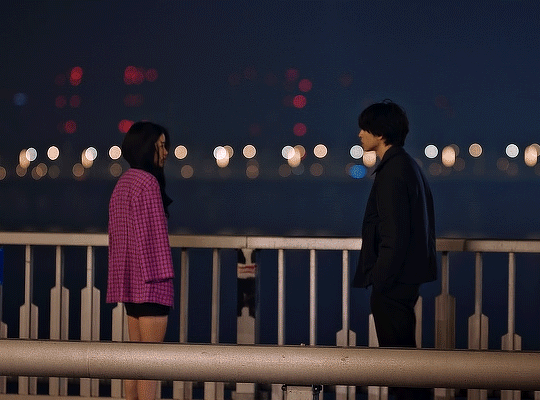
Ku San Young(Kim Tae Ri) and Lee Hong Sae(Hong Kyung) in Revenant
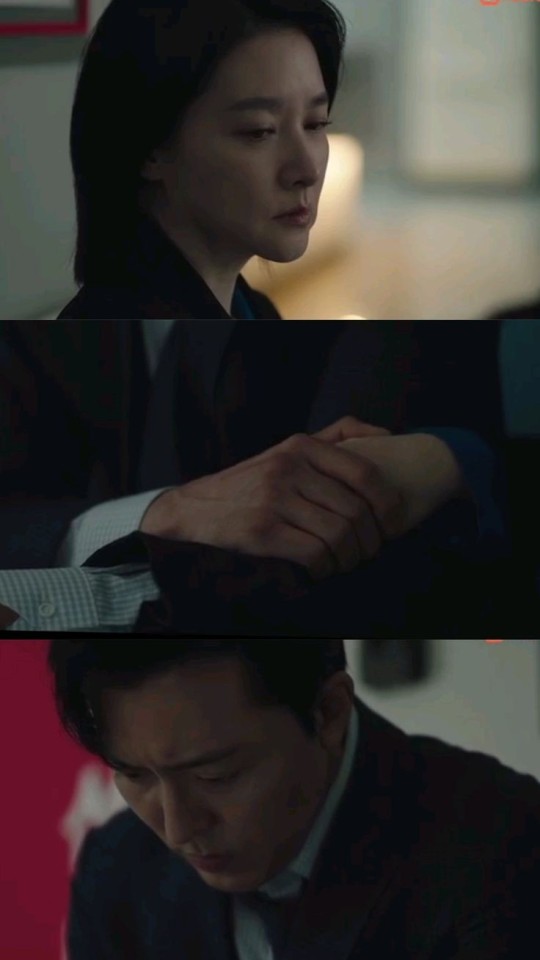
Cha Se Eum(Kim Young Ae) and Yoo Jeong Jae(Lee Moon Sang) in Maestra: Strings of Truth

Lee Gang Hyeon( Park Ji Hyun) and Jin Yi Soo(Ahn Bo Hyun) in Flex x Cop
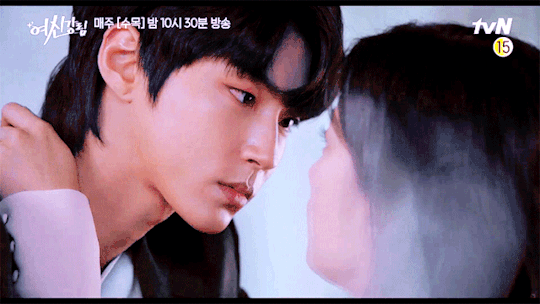
Lim Jukyung(Moon Gayoung) and Han Seojun(Hwang Inyeop) in True Beauty
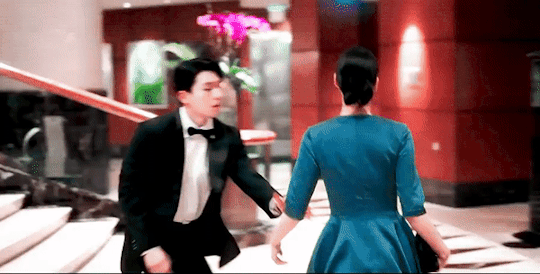
Oh In Joo (Kim Go Eun) and Choi Do il(Wi Ha Joon) in Little Women(2022)
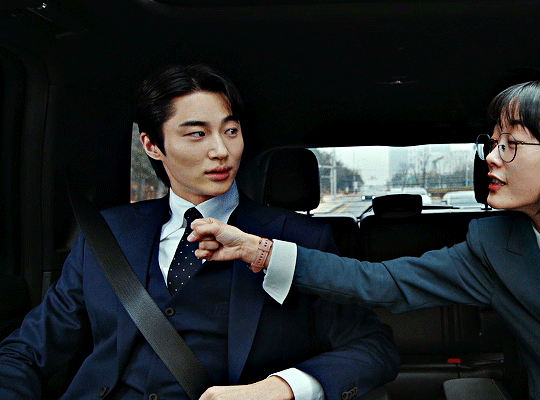
Kang Nam Soon (Lee Yoomi) and Ryu Shi Oh (Byun Woo Seok) in Strong Woman Kang Nam Soon
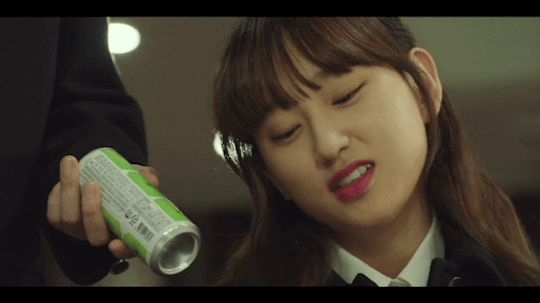
Kang Sol A(Ryu Hye Young) and Han Joon Hwi(Kim Bum) in Law School
Bonus: Japanese Drama Couple
Didn't get a better GIF for them
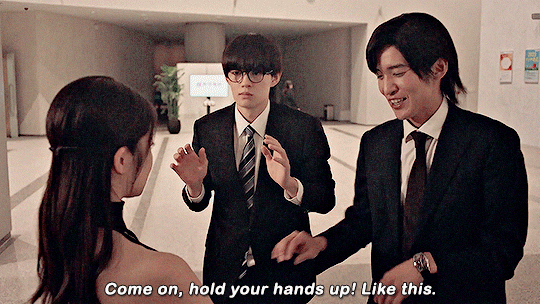
Kokuryu Kirika(Mio Imada) and Tennoji Haru (Meguro Ren) in Trillion Game
#kdramas#revenant#kim tae ri#hong kyung#maestra#park jihyun#ahn bo hyun#flex x cop#hwang inyeop#moon ga young#true beauty#kim go eun#wi ha joon#little women 2022#lee yoo mi#byun woo seok#kang nam soon#korean dramas#jdrama#meguro ren#mio imada#kim bum#law school
182 notes
·
View notes
Text

what
is he hyeon-moo
wow holy shit
he farmed?
horn
so cute so tiny
north korea?
it is a horn
ah from the north???
horn
north korea jesus
horne
from the north?
chay and tallulah live near the cliff
ah... do you know kim jeong eun?
horn(kor)=horn
CHAY SAID THAT THEY LIVE NEAR THE NORTH KEKW
148 notes
·
View notes
Text

SangAh, YuJeong, NaYoung, Chowon, JuHyeon & Hina (LIGHTSUM) - Selca
#SangAh#Yoon Sang Ah#YuJeong#Lee Yu Jeong#NaYoung#Kim Na Young#Chowon#Han Cho Won#JuHyeon#Lee Ju Hyeon#Hina#Nagai Hina#LIGHTSUM#Selca
15 notes
·
View notes
Text
Boys Be Brave Eps 7 & 8 (Finale) Stray Thoughts
Last week, Jeong Gi Seop finally recognized his feelings for Kim Jin Woo when he saw the way he was looking at Jin Woo. Jin Woo spiraled on his own, and when he turned his phone back on learned that Gi Seop had traveled to see his dad. Meanwhile, Balgeum had the most embarrassing experience possible when he misread a coupon on his date with Ji In Ho, and also had to turn down an expensive gift.
Episode 7: The gift I wanted to receive
Curious what document is so important that we have multiple people hopping on trains to get it. Ah, trains.
Oh right, Gi Seop saw Jin Woo with Kang Hye Jin on the swings during the first snow and misunderstood.
Gi Seop, I appreciate the energy here, but don’t tear up someone’s work.
Mhmm, and now you’re embarrassed.
Unsurprised that Jin Woo is claiming he tore the papers.
This boy loves his lists. It may be late, but I’m glad Jin Woo’s dad recognizes that he let this huge gulf grow between him and his son.
Gi Seop’s face is definitely more attractive when he’s looking at Jin Woo thoughtfully or fondly. He’s mostly looked confused for most of the show.
My boy Balgeum is not doing well.
Big fan of the planetarium date.
Damn, ending on the confession not being accepted kinda hurt. On the one hand I’m glad Gi Seop can potentially say no, but on the other hand he’s been flirting with this man for weeks.
Episode 8: A promise to recognize it at first “sight”
Why is he back in this wig?
Okay, ya boi needed to handle his business before committing to Jin Woo.
Yes, remove these hair extensions immediately!
Wow, they actually did remove them.
Glad we’re finally doing a wellness check on Choi Balgeum.
I suppose Kim Jin Woo has been studying economics and finance, so he’s a good person for Balgeum to talk to.
I love Kang Hye Jin. I want to see her beat someone up who deserves it.
Ji In Ho and Choi Bal Geum really hit every time.
Korean speakers, can y’all check in with me about what Choi Balgeum meant about becoming a better person? I feel kinda bummed that he thinks he’s a bad person because his parents got saddled with debt.
Final Verdict: 7, This is an Easy Watch as a BL. I really struggled while watching the first six episodes of this show because I felt old internalized homophobia stirring in the reasons Kim Jin Woo and Choi Balgeum were holding back in their relationships, and this is becoming something I am having a harder time with BL flirting with lately. It feels like multiple shows in close succession try to straddle this line between the bubble of BL land where everyone is potentially queer and the real world where there are consequences for being queer. I don’t think this show was as elegant about it as Our Dating Sim and so it won’t become something I return to frequently because it created a low-level dissonance for me the entire time (and I also feel kinda sad that the sides didn’t get as much as I wanted). However, I really liked the flavor of the drama between Choi Balgeum and Ji In Ho. I thought it was a really attractive show to watch with good performances. I also think Kim Sung Hyeon was really compelling to watch as Kim Jin Woo. I think he’s extremely talented and has excellent control of his expressions and body to consistently contextualize what his character is feeling.
31 notes
·
View notes
Text
The History of Korean Male Soloists from the 20th Century: Episode 3/?
The third episode of 'The History of Korean Male Soloists from the 20th Century' highlights prominent Korean musicians who achieved fame in the early 20th century, during the period of Japanese occupation.
The historical documentation related to these artists is frequently unreliable, largely due to the fact that their contributions occurred almost a century ago, before the Korean War, leading to the loss or unavailability of essential records.
Kim Saeng Ryeo (김생려; 金生麗)
Kim Saeng-ryeo is linked to the Yonhui Professional Orchestra (연희전문사중창단), founded in 1929, as discussed in Part 3. The Yonhui College Orchestra/Quartet, led by Hyun Je-myeong (현제명), held biannual concerts from 1930 for nearly a decade, showcasing emerging talent and reflecting the changing musical tastes of the colonial era. This orchestra was instrumental in the development of musicians such as Kim Seong-tae (김성태), Lee In-beom (이인범), Kim Saeng-ryeo (김생려), and Lim Dong-hyeok (임동혁).
Numerous types of orchestras exist, and I discovered a resource that provides a comprehensive overview of each, including philharmonic, symphony, chamber, opera, string, and wind orchestras, among others. This resource will cover a variety of orchestral forms.

Life and Career
Born on November 25th, 1912, in Yongbyon, North Pyongan Province, and passing away in Las Vegas on December 14th, 1995, at the age of 83, he was the only son among five siblings and married to dancer Kwon Ryeo-seong (권려성). His father, a devout Christian and elder, introduced him to the church at an early age, fostering a particular fascination with the organ. Shortly after his birth, his father established a church in Bukcheong, where Kim Saeng-ryeo spent his formative years.
He played a crucial role in the establishment of the Seoul Philharmonic Orchestra and was instrumental in founding the Seoul Symphony Orchestra after Korea's liberation, thereby leaving a significant mark on the country's symphonic music scene. His early life unfolded in Anju, South Pyongan Province, and Bukcheong, South Hamgyong Province. Like other key figures in the early development of Western music in Korea, such as Hyeon Je-yeong (현제명), Lee Heung- ryeol (이흥렬), and Gye Jeong-sik (계정식), Kim was raised in a Protestant household, which provided him with early access to Western musical traditions.
From a young age, he demonstrated exceptional skill in playing both the organ and harmonica. His journey with the violin began in elementary school, where he had already shown a unique aptitude for the organ and harmonica, often playing during his free time. His passion for music persisted even after starting school, as he would occasionally leave class to visit a church and immerse himself in musical experiences.
In the second grade, his fascination with music deepened when he encountered an amateur violinist, which inspired him to take up the violin. This pivotal moment marked a significant shift in his musical journey. After completing elementary school, he moved to Seoul to pursue further education, enrolling in the second high school, now known as Gyeongbok High School (경복고등학교; 景福高等學校), where he distinguished himself as a disciplined and diligent student.
While attending Gyeongseong Jeigo High School, he received violin lessons from Boots, the wife of a foreign doctor at Severance Hospital (세브란스병원). His serious commitment to violin studies intensified after meeting Gye Kye-sik, a returnee from Germany. He continued to practice diligently at Yonhui College (연희전문학교; 延禧專門學校) and, upon graduation, took on roles as an accompanist and conductor for the Gyeongseong Broadcasting Station Orchestra (조선방송협회(朝鮮放送協會). However, during the Gwangju Student Incident https://en.wikipedia.org/wiki/Gwangju_Student_Independence_Movement (광주 학생 독립 운동; 光州學生獨立運動), he actively participated in protests, which led to his pursuit by the Japanese police and subsequent suspension from school. He was only reinstated after submitting a written account of his actions, but he continued to face challenges, particularly from his Japanese teachers, ultimately graduating under difficult circumstances.

Throughout his academic evolution, his commitment to music remained steadfast. After finishing elementary school, he moved to Seoul to further his education, enrolling in Jeigobo (제이고보), now recognized as Gyeongbuk High School. His association with Kim Hyung-jun (김형준; 金亨俊), a violinist and conductor, facilitated his involvement with the Gyeongseong Central Orchestra (경성중앙관현악단; 京城中央管絃樂團) as a violinist. Upon graduating from Gyeongbuk High School, he encountered Gye Jeong-sik (계정식; 桂貞植), a returnee from Germany, who helped him strengthen his foundational skills in violin, leading to his participation as a second violinist in a string quartet directed by Gye Jeong -sik.
Despite familial opposition to his musical aspirations, he persevered and, after graduating from Gyeongbuk High School, gained admission to Yonhee College through the recommendation of Hyun Je-myeong (현 종양). There, he continued to engage in musical activities and was appointed as the second violinist in a string quartet under Gye Jeong-sik's (계정식; 桂貞植) leadership. Although he attempted to follow his father's wishes by applying to Severance Medical School, he was unsuccessful and instead enrolled in the liberal arts department at Yonhee College, where he benefited from diverse musical experiences and eventually became the head of the school band.
Under the mentorship of Hyun Je-myeong, who began his role in 1929, he collaborated with notable musicians such as Kwak Jeong- seon (곽정선), Kwak Jeong-sun (곽정선), and Kim Gwan (김관). In the early 1930s, he worked with Kim Seong-tae (김성태) (violin), Lee Yu-seon (이유선) (vocal), and Hwang Jae-gyeong (황재경) (flute) within the music department at Yonhee College, further advancing his musical skills. However, following a victorious sports match against Gyeongseong Medical School, which included Japanese students, he celebrated with the band members, leading to an incident that resulted in his indefinite suspension after being held accountable for the situation.
His time in Japan represented a transitional phase, but upon his return to Korea two years later, he re-enrolled at Yonhui College. There, he secured a position with the Gyeongseong Central Broadcasting Station Orchestra and supplemented his income by working as a violin accompanist for the prestigious Victor Records orchestra. Although he graduated in 1937, two years later than his classmates due to his studies abroad, he remained actively engaged in music, including performing violin solos during chapel services at the college.
Kim Saeng-ryeo's experience at Yeonjeon coincided with the return of Hyun Je-myeong from the United States, marking a high point for the Yeonjeon Music Club. During this vibrant period, he collaborated with notable musicians such as Kim Seong-tae, Jeong Hee-seok, Lee In-beom (이익), and Hwang Jae-gyeong. After completing his studies at Yeonjeon, he continued his career as an accompanist for both the Gyeongseong Broadcasting Station Orchestra and Victor Records.
Following the return of Hong Nan-pa (홍난파; 洪蘭坡) (April 10, 1898 – August 30, 1941) from the United States, who expanded the Gyeongseong Broadcasting Orchestra, Kim Saeng-ryeo assumed the role of conductor, fostering a strong musical partnership with Hong. During this time, he also developed a close relationship with Kim Seong-tae, visiting him to study harmony and composition. When Hong Nan-pa fell ill, Kim dedicated himself to supporting him, managing the broadcasting station's responsibilities in his absence and providing care until Hong's passing.
Hong Nan-pa's counsel became a guiding principle for him: “If you aspire to be a flower, abandon music. If you wish to be a seed that flourishes for future generations, persist in music.” This philosophy provided him with resilience and served as an enduring compass during challenging times.

In the 1940s, he adopted the name Kaneyama as part of a broader national integration initiative. Following the death of Hong Nan-pa, Kim Saeng-ryeo assumed leadership of the orchestra and invited Gye Jeong -sik.to conduct. However, when the broadcasting station attempted to replace Gye-sik with a Japanese conductor, the Korean members, led by Kim Saeng-ryeo, vehemently resisted. Ultimately, when their efforts were thwarted, he chose to resign and establish a private orchestra.
He demonstrated his violin prowess at the inaugural concert of the Joseon Symphony Orchestra and at an event organized by the Joseon Music Association in 1941. That same year, he performed a solo at the "Peninsula Entire Enlistment Song Recital," which marked the introduction of the conscription system. He also participated in the "Music Patriot Weekly Music Festival" at Bumin Hall (부민관; 府民館) alongside prominent musicians. In 1942, he became the conductor of the Kyungsung/Gyeongseong Welfare Chamber Orchestra (경성후생실내악단; 京城厚生室內樂團) and joined the National Mobilization Federation of Korea/ Music Popularization Corps (國民音樂普及挺身隊) in 1943, performing at various patriotic events, including the "Battleship Donation and Patriotic Chamber Symphony Night." As the first violinist of the Kim Saeng-ryeo String Quartet and later a representative of the Hwaseong Chamber Orchestra, he continued to perform at events that celebrated the conscription system and supported pro-Japanese organizations.

Bumin Hall (부민관; 府民館) in the early 1940s
In 1942-1943, he established the Husung Chamber Orchestra following his resignation from the broadcasting station, which subsequently toured across the nation. Notably, soprano Kim Cheon-ae, a founding member of the orchestra, performed "Bongseonhwa" (봉선화) during the tour, providing solace to audiences mourning their country's plight, which led to her being monitored by the Japanese authorities.
In 1944, the Husung Chamber Orchestra relocated to Xingjing, Manchuria, where its members integrated into the Xingjing Symphony Orchestra. As liberation approached in 1945, he returned to Korea at the behest of Hyun Je-myeong to reestablish the Husung Orchestra, coinciding with the country's liberation. He took on the role of conductor for the newly formed Goryeo Symphony Orchestra in 1945, having previously been an active violinist during the Japanese colonial era. Following liberation, at Hyun Je-myeong's request, Kim Saeng-ryeo mobilized efforts to assemble around 50 musicians in the fall of 1945, successfully founding the Goryeo Symphony Orchestra under conductor Gye Jeong -sik., marking the inception of Korea's first orchestra post-liberation.

‘Bongsunga’ (봉선화) sheet music by Kim Hyung-jun, composed by Hong Nan-pa (100 Years of Our Western Music)
He subsequently departed from the Goryeo Symphony Orchestra. In 1946, he co-established the Seoul Music Club (서울음악동호회), recognized as the first chamber orchestra formed post-liberation of Korea, alongside Lee Jae-ok (이재옥), Jeong Hoon-mo (정훈모), Lee In-hyeong (이인형), Ahn Seong-gyo (안성교), Oh Byeong-do (오병도), and Jeon Bong-cho (전봉초). This initiative served as a foundation for the eventual formation of the Seoul Symphony Orchestra, where he assumed the role of conductor and later founded the Kim Saeng-ryeo Quartet in 1947, collaborating with Lee Yong-cheol (이용철), Choi Gyu-yeong (최규영), and Kim Jun-deok (김준덕). He was also a member of the Seoul Orchestra, alongside Jo Bong-deok (조봉덕), Lee Gyu-su, and Kim Soon-deok (김순덕). In 1947, he took the initiative to establish and manage the Seoul Symphony Orchestra, which was the precursor to the Seoul City Symphony Orchestra (서울시립교향악단; Seoul Philharmonic orchestra ,─市立交響樂團) founded in 1948, drawing from the Korea Symphony Orchestra (고려교향악단; 高麗交響樂團) and the Seoul Orchestra, and made his conducting debut at the inaugural concert held in February of the following year.

1950s picture of the Seoul Symphony Orchestra
Kim Saeng-ryeo embarked on his professional journey as a conductor through a prestigious invitation extended by the U.S. State Department. This opportunity allowed him to immerse himself in the world of classical music, where he had the privilege of studying under some of the most esteemed maestros of the time, including the legendary Leonard Bernstein and the renowned Eugene Ormandy. These formative experiences not only honed his skills but also enriched his understanding of orchestral dynamics and interpretation. As his conducting career progressed, Kim Saeng-ryeo showcased his exceptional talent by leading prominent orchestras, such as the Boston Symphony Orchestra and the Philadelphia Philharmonic. His performances on international stages garnered acclaim and recognition, establishing him as a significant figure in the global classical music scene.
Upon returning to Korea, Kim Saeng-ryeo was instrumental in founding the Seoul City Symphony Orchestra in November 1958. His vision and commitment were key in defining the orchestra's character, and he assumed the roles of permanent conductor and representative. Initially, he played as the first violinist when the orchestra commenced its activities in January of that year. The inaugural concert was conducted by Kim Seong-tae, and soon after, the orchestra began regular performances under the direction of German conductor Rolph Jacobi, who served as an advisor to the Central Broadcasting Station. However, following Jacobi's unexpected departure to Germany, Kim Saeng-ryeo took over as conductor for a concert in Daegu, marking the beginning of his conducting career.
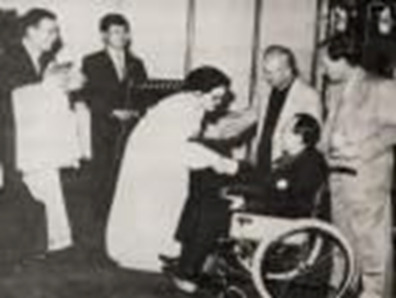
In October 1995, Kim received a distinguished invitation to conduct at the Korean Symphony Orchestra's 50th anniversary concert, he performed from a wheelchair and received enthusiastic response from the audience.
Under Kim's direction, the orchestra not only expanded its repertoire but also undertook extensive tours throughout Southeast Asia, performing in nations such as Vietnam, Hong Kong, and Taiwan. These tours highlighted the orchestra's talent and promoted cultural exchange, enhancing the appreciation of classical music in the region. Kim played a crucial role in negotiating the orchestra's establishment with the Seoul Metropolitan Government, ensuring a strong foundation for its operations and performances. His dedication to the orchestra's development established it as a significant entity in Korea's cultural scene, quickly gaining popularity among audiences, who often displayed overwhelming enthusiasm during performances. Notable works conducted by him included Kim Seong-tae's "Capriccio," Schubert's "Unfinished Symphony," and Ravel's "Bolero Dance" at various concerts.
Throughout his tenure, Kim Saeng-ryeo conducted a series of notable performances that left a lasting impact on the Korean music scene. Among these were Puccini's "Tosca," which he conducted in October 1958, and the double bill of Leoncavallo's "Pagliacci" and Mascagni's "Cavalleria Rusticana" in June 1959. These productions were significant not only for their artistic merit but also for their role in introducing Western operatic traditions to Korean audiences. In November of the same year, he conducted Bizet's "Carmen" at the National Theatre of Korea, further solidifying his reputation as a conductor capable of delivering powerful and emotive performances.

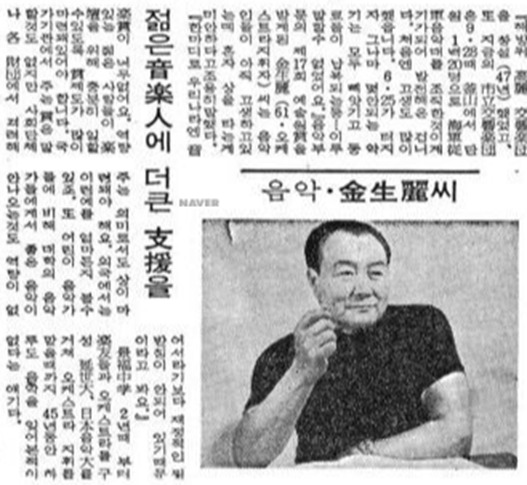
Photo 1 -> Kim Saeng-ryeo 1972 Photo 2 -> Newspaper clipping published in June 25th 1972
Despite successfully navigating numerous challenges to develop the orchestra, the onset of the Korean War compelled him to abandon his ambitions for the ensemble, leading to a three-month period of hiding under communist rule until Seoul was recaptured on September 28. Ultimately, the Seoul Symphony Orchestra was disbanded after its 23rd regular concert due to the war. At its formation, the orchestra included a wide array of musicians, featuring first and second violinists, violists, cellists, and various woodwind and brass players. Among the distinguished members were Kim Saeng-ryeo and Jo Bong-deok on first violin, alongside a diverse group of instrumentalists such as flutists, oboists, clarinettists, and trumpeters. The ensemble also incorporated percussionists and a pianist, creating a rich auditory experience that defined the orchestra's performances during its short yet significant existence.
Full List of the members at the time of its founding of Seoul Symphony Orchestra were as follows: . 1st Violin (제1 바이올린): Kim Saeng-ryeo (김생려), Jo Bong-deok (조봉덕; 趙鳳德), Lee Gyu-su (이규수; 李奎秀), Kim Soon-deok (김순덕; 金順德), Lee Gye-seong (이계성; 李桂成), Baek Hae-je (백해제; 白海帝), Lee In-hwan (이인환; 李仁煥), Heo Sang (허상; 許湘), Lee Sung-tae (이숭태; 李崇泰), Shin Sang-cheol (신상철; 申相徹), Kim Hae-ryong (김해룡; 金海龍). . 2nd Violins (제2 바이올린): Lee Jae-ok (이재옥; 李在玉), Nam Chang-hyun (남창현; 南昌鉉), Jo Gyu-won (조규원; 趙奎元), Choi Ho-won (최호원; 崔豪源), Moon In-yeon (문인연; 文麟連), Lee Dong-hee (이동희; 李東熙), Kim Seon-hwa (김선화; 金善化), Jeon Chang-jae (전창재; 全昌宰), Jeon Oh-bok (전오복; 全五福), Park Jun-hwang (박준황; 朴俊晃). . Violas (비올라): Ahn Seong-gyo (안성교; 安聖敎), Lim Chun-ok (임춘옥; 林春沃), Lee Yeong-don (이영돈; 李泳敦), Lee Jae-man (이재만; 李裁晩). . Cello (첼로): Jeon Bong-cho (전봉초; 全鳳楚), Woo Dal-hyeong (우달형; 禹達亨), Lee In-gyu (이인규; 李寅圭), Park Guk-rok (박국록; 朴國錄), Kim Jong-myeong (김종명; 金鍾明), Lee Jeong-eon (이정언; 李禎彦), Yoo Jeong-yong (유정용; 劉廷鏞). . Flute (플루트): Oh Byeong-do (오병도; 吳炳道), Lee Gi-yoon (이기윤; 李基潤), Hong Su-man (홍수만; 洪壽萬). . Oboe (오보에): Lee Byeong-woo (이병우; 李炳祐). . Clarinet (클라리넷): Hong Gwang-eun (홍광은; 洪光銀), Kim Seong-hun (김성훈; 金成勳). . Bass (파곳): Kim Yeong-gyu (김영규; 金英圭), Na Moon (나문; 羅文). . Horn (혼): Jeong Hoe-gap (정회갑; 鄭回甲), Kim Jong-sun (김종순; 金宗純), Kim Yun-seong (김윤성; 金潤成), and Hyeon Su-so (현수소; 玄壽瀟). . Trumpets (트럼펫): Kim Jong-dae (김종대; 金鍾大), Park Ju-doo (박주두; 朴柱斗), and Kim Man-bok (김만복; 金萬福). . Timpani (팀파니): Han In-hang (한인항; 韓麟恒). . Battery/ Baeteoli (배터리): Kwon Yong-jin (권용진; 權龍鎭), Han Seong-jin (한성진; 韓聖振). . Piano (피아노): Lee In-hye (이인형; 李仁亨). . Conductor/Arrangement (지휘·편곡): Jacobi (쟈코비), Kim Seong-tae (김성태; 金聖泰). . Vocalists (성악): Kim Cheon-ae (김천애; 金天愛), Kim Hye-ran (김혜란; 金惠蘭), Lee In-beom (이인범; 李仁範), Kim Hyeong-no (김형노; 金炯魯).

The Symphony Orchestra of Seoul City gave a concert in Hong Kong on April 20, 1947. (Photo by: Universal History Archive/Universal Images Group via Getty Images)
Following the recapture of Seoul during the Second Battle of Seoul in 1950, the establishment of the Seoul Symphony Orchestra was initiated alongside the formation of the Naval Military Training Band, which served as the precursor to the Seoul Metropolitan Symphony Orchestra. This endeavour marked a significant cultural development in a time of conflict.
In his role as conductor, he assembled musicians and sought support from the Navy to create the Navy Military Band. Despite the ongoing war, this ensemble was unique in its provision of employment for musicians and opportunities for music enthusiasts to enjoy performances. He maintained his leadership of the band throughout the duration of the war, ensuring its continued presence in the musical landscape.
As a founding member of the Korean Musicians Association established on November 8, 1949, he played a pivotal role in the organization of the Naval Military Music Band in October 1950, where he served as captain. Following the appointment of all 120 members of the Naval Cultural Promotion Corps as civilian naval officers, the band held its inaugural concert in November 1950 at Sigong Hall, celebrating both the Navy's fifth anniversary and the recapture of Seoul. The band, which returned to Seoul in 1953, became influential in the performance scene, showcasing significant works and ultimately evolving into the Seoul Symphony Orchestra, which was later restructured into the Seoul Metropolitan Symphony Orchestra in 1960.

The main characters Patty Kim (김혜자; 金惠子) (left) and Kwak Gyu-seok (곽규석) (Right) at the premiere of the musical 'Saljjagi Obseye' (살짜기 옵세아이) by the Yegreen Orchestra in 1966. [Joongang Photo]
Kim was appointed as the first conductor of the Seoul City Symphony Orchestra, a role he maintained until 1961. Initially optimistic about fostering a vibrant symphony orchestra movement, his ambitions were thwarted by the political turmoil surrounding the April 19 Student Revolution in 1960 and the May 16 Military Coup in 1961. These events culminated in his resignation, prompted by legal disputes involving current and former orchestra members. Nevertheless, during his tenure, Kim Saeng-ryeo actively guided the orchestra, undertaking performances both domestically and internationally, including tours throughout Southeast Asia, thereby establishing a significant foundation for the orchestral movement in Korea.
In January 1962, Kim assumed the role of director for the Yegreen Orchestra, which was founded with the guiding principle of "Remembering the Past and Yesterday for Tomorrow." By September of that year, the orchestra had successfully staged five performances of the "Chuseok Play," showcasing a variety of musical selections. After the orchestra's dissolution, the exact timing of which is uncertain, Kim established the Arirang Folk Arts Troupe, which toured extensively across the United States, Canada, Europe, and other regions, playing a vital role in the dissemination of South Korean culture.
In the same year, Kim also held several significant positions, including head of the music department at Kyunghee University, representative of the Yegreen Orchestra, and artistic member and commander of the Naval Military Music Band. His diverse engagements in these organizations, along with his role in representing the Seoul Metropolitan Symphony Orchestra, highlighted his prominent influence in the South Korean music landscape during this era.

1967 Yegreen Orchestra ‘Kkotnim, Kkotnim, Kkotnim’ (꽃님, 꽃님, 꽃님). The middle of the second row is Na Yeong-su (나영수), and next to him on the left is Hwang Ik-pyeong (황익평), Moon Hye-ran (문혜란), Lim Yeong-ung (임영웅), Park Yong-gu (박용구), Choi Chang-kwon (최창권), and Kwak Gyu-seok (곽규석) (Fry Boy). The man sitting in the middle of the front row is Hwang Un-heon (황운헌) (Chief of the Literature Department).
In 1962, he travelled to the United States to pursue studies in conducting, and by 1971, he had taken on a professorship in the Department of Music at Hanyang University. He returned to the United States in 1976, where he held the position of permanent conductor for the Southern California Philharmonic Orchestra until 1992.
In October 1995, he received a distinguished invitation to conduct at the Korean Symphony Orchestra's 50th anniversary concert, performing from a wheelchair and receiving an enthusiastic response from the audience. His impact on the Korean symphonic scene was significant; he established the Seoul Symphony Orchestra Association and the Seoul Symphony Orchestra, while also enhancing Korean music through his leadership of the Yegreen Orchestra, his role with the Arts Council, and his teaching at Kyunghee University. His achievements were acknowledged with numerous awards, including the Swedish Red Cross Medal and the Seoul City Cultural Award. Kim passed away due to diabetes-related complications at Sunrise Hospital in Las Vegas, USA, on December 14, 1995, at the age of 83.
Activities and Achievements
Kim Saeng-ryeo's career in music began in 1939 when he served as the conductor for the Seoul Central Broadcasting Station Orchestra. He played a pivotal role in establishing several orchestras, including the Seoul Welfare Chamber Orchestra in 1942, where he was a violinist, and the Goryeo Symphony Orchestra in 1945, for which he was the founding conductor. His influence continued with the founding of the Seoul City Symphony Orchestra in 1948, where he also held the position of conductor. By 1950, he became the Permanent Conductor of the Philadelphia Symphony Orchestra in the United States, while also commanding the Naval Music Band (해군정훈음악대; 海軍政訓音樂隊).

The 14th Program of the Korea Symphony Orchestra (1947)
Throughout his career, Kim received numerous accolades for his contributions to music. Notable awards include the Prime Minister's Cultural Medal in 1948, the Merit Award from the Swedish Red Cross in 1951, and the Seoul City Cultural Award in 1955. His international recognition was further solidified with the Greek Theatre Arts Medal in 1964 and the Republic of Korea National Academy of Arts Award in 1974, among others. These honours reflect his significant impact on the cultural landscape both in Korea and abroad.
In addition to his conducting roles, Kim was actively involved in various artistic initiatives. He conducted the Danwood Symphony Orchestra during the Bergsha Music Festival in 1953 and led the Arirang Folk Art Troupe on tours in the United States and worldwide in 1964. His collaboration with prominent orchestras, such as the Ormandy and Boston Symphony Orchestra in 1968, showcased his versatility. Notably, he celebrated the 500th regular concert of the Seoul City Symphony Orchestra in 1994, marking a significant milestone in his enduring legacy within the music community.
Seoul City Orchestra "Kim Saeng- ryeo's Reminiscence" Concert
Seoul City Orchestra "Kim Saeng-ryeo Reminiscence" Concert 11th Sejong Centre for the Performing Arts - Reporter Ryu Yun-jong
The "Emperor" of 44 years ago has been revived as today's "Emperor." The Seoul City Orchestra's regular concert, held at 7:30 PM on the 11th in the Sejong Center for the Performing Arts Main Hall, will be a meaningful stage with the subtitle "Kim Saeng-ryeo Reminiscence." It is a place to commemorate the first anniversary of the death of the late Kim Saeng-ryeo, the founder of the Seoul City Orchestra, and to honor his achievements and will. In this concert, Kim Won-mo (professor at Dankook University) will be the guest conductor and Baek Nak-ho (chairman of the Korea Music Association) will perform Beethoven's Piano Concerto No. 5 "Emperor."
youtube
서울시립교향악단 제 545회 정기연주회 "김생려 회상" [1996] Seoul City Symphony Orchestra 545th Regular Concert "Kim Saeng-ryeo Reminiscence" [1996]
Although it is a collaboration stage between a veteran pianist and a mid-career conductor that anyone would know by name, their meeting that day holds special meaning. In the midst of the smoke of the 1952 war, Baek Nak-ho (백낙호) performed "Emperor" with the Naval Music Band, the predecessor of the Seoul Philharmonic Orchestra, under the direction of Kim Saeng-ryeo in Busan, where he was a refugee. Professor Kim Won-mo (김원모) is Kim Saeng-ryeo's second son. He arranged Tchaikovsky's Symphony No. 6 "Pathetique," which his father enjoyed conducting, as the second half of the concert.
Baek Nak-ho (백낙호) recalled, "During the three years of my refuge in Busan, I spent my time with Kim Saeng-ryeo in the Naval Music Band, and we built a friendship as seniors and juniors."
At the concert, Lim Won-sik (임원식; 林元植) (Professor Emeritus of Chugye University for the Arts), who played a leading role in the founding of the National Symphony Orchestra (now the KBS Symphony Orchestra) in 1957 and competed with the Seoul Philharmonic Orchestra in good faith, will share his memories of the deceased in the form of reminiscences.
-------------------------------------------------------
Part 2 will be coming out soon!
#south korea#history#korea#Korean Music#Korean Music History#Music History#Kim Saeng-ryeo#김생려#photography#korean history#Youtube
7 notes
·
View notes